HOW TO
ANALYZE DATAPOCKET STUDY SKILLSSeries Editor: Kate Williams, Oxford Brookes University, UK Illustrations by Sallie Godwin For the time-pushed student, the Pocket Study Skills pack a lot of advice into a little book. Each guide focuses on a single crucial aspect of study giving you step-by-step guidance, handy tips and clear advice on how to approach the important areas that will continually be at the core of your studies. Published 14 Days to Exam Success (2nd edn) Analyzing a Case Study Brilliant Writing Tips for Students Completing Your PhD Doing Research (2nd edn) Getting Critical (2nd edn) How to Analyze Data Managing Stress Planning Your Dissertation (2nd edn) Planning Your Essay (3rd edn) Planning Your PhD Posters and Presentations Reading and Making Notes (2nd edn) Referencing and Understanding Plagiarism (2nd edn) Reflective Writing Report Writing (2nd edn) Science Study Skills Studying with Dyslexia (2nd edn) Success in Groupwork Successful Applications Time Management Using Feedback to Boost Your Grades Wheres Your Argument? Writing for University (2nd edn)  Catrin Radcliffe, under exclusive licence to Springer Nature Limited 2020 All rights reserved. No reproduction, copy or transmission of this publication may be made without written permission. No portion of this publication may be reproduced, copied or transmitted save with written permission or in accordance with the provisions of the Copyright, Designs and Patents Act 1988, or under the terms of any licence permitting limited copying issued by the Copyright Licensing Agency, Saffron House, 610 Kirby Street, London EC1N 8TS. Any person who does any unauthorized act in relation to this publication may be liable to criminal prosecution and civil claims for damages.
Catrin Radcliffe, under exclusive licence to Springer Nature Limited 2020 All rights reserved. No reproduction, copy or transmission of this publication may be made without written permission. No portion of this publication may be reproduced, copied or transmitted save with written permission or in accordance with the provisions of the Copyright, Designs and Patents Act 1988, or under the terms of any licence permitting limited copying issued by the Copyright Licensing Agency, Saffron House, 610 Kirby Street, London EC1N 8TS. Any person who does any unauthorized act in relation to this publication may be liable to criminal prosecution and civil claims for damages.
The author has asserted her right to be identified as the author of this work in accordance with the Copyright, Designs and Patents Act 1988. First published 2020 by
RED GLOBE PRESS Red Globe Press in the UK is an imprint of Springer Nature Limited, registered in England, company number 785998, of 4 Crinan Street, London, N1 9XW. Red Globe Press is a registered trademark in the United States, the United Kingdom, Europe and other countries. ISBN 9781137608468 paperback This book is printed on paper suitable for recycling and made from fully managed and sustained forest sources. Logging, pulping and manufacturing processes are expected to conform to the environmental regulations of the country of origin. A catalogue record for this book is available from the British Library.
A catalog record for this book is available from the Library of Congress. ContentsAcknowledgements Thank you to all my students at Oxford Brookes University who have shared their research topics, data and statistical woes with me over the years. This book would not exist without these many conversations and discussions. I would like to thank Kate Williams for her continued support, encouragement and editorial suggestions in shaping this book. A special thank you to Dr Jennifer Lloyd of the University of British Columbia, Vancouver, for being an overwhelmingly supportive, caring friend and for her thoughtful, helpful input that challenged and enriched my ideas. Many thanks to Professor Ivan de Araujo of Icahn School of Medicine at Mount Sinai, New York, for his continued support, encouragement and being there.
Thank you, also, to Sallie Godwin for bringing concepts to life with her wonderful illustrations. Finally, thank you, Guy, for your belief in me during this journey. Catrin Radcliffe Introduction Statistics is a branch of mathematics used to describe, analyze and interpret data. Statistical calculations range in complexity in answering questions:  a simple calculation: reporting information, such as the average grade of the end-of-year exam
a simple calculation: reporting information, such as the average grade of the end-of-year exam  a more complex calculation: reporting whether better grades are achieved by students born in the first half of the academic year than those born in the second half. Whatever basic statistical task you have to accomplish, this book is designed to guide you through the process of statistical analysis. How to Analyze Data is designed to complement traditional statistics books, making the content of these more accessible and signposting you to the relevant sections.
a more complex calculation: reporting whether better grades are achieved by students born in the first half of the academic year than those born in the second half. Whatever basic statistical task you have to accomplish, this book is designed to guide you through the process of statistical analysis. How to Analyze Data is designed to complement traditional statistics books, making the content of these more accessible and signposting you to the relevant sections. 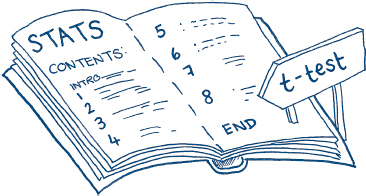 Who is this book for? You may have collected some data and you need to write the Methods and Results section of your report.
Who is this book for? You may have collected some data and you need to write the Methods and Results section of your report.  Who is this book for? You may have collected some data and you need to write the Methods and Results section of your report.
Who is this book for? You may have collected some data and you need to write the Methods and Results section of your report.
Maybe you need to write a report based on data that you have been given. Perhaps you need to interpret the statistical findings in a published article. 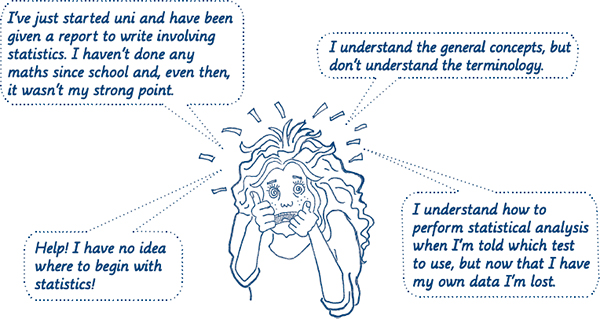 If this is you, then youve come to the right place. Read on! About this book How to Analyze Data is organized to guide you through the statistical process starting from the very first step. It does not detail every statistical measure or method youll find in a stats text book. Part 1 Getting started is about the first steps in data analysis: defining your research question, designing your questionnaire and entering your data into a spreadsheet. Part 2 Understanding and describing your data takes you through the first two steps of the statistical process: what statistical measures to report and how to calculate them for different types of data. Part 3 How do statistical tests work? unmasks how various statistical tests work and the assumptions made in analyzing data. Part 3 How do statistical tests work? unmasks how various statistical tests work and the assumptions made in analyzing data.
If this is you, then youve come to the right place. Read on! About this book How to Analyze Data is organized to guide you through the statistical process starting from the very first step. It does not detail every statistical measure or method youll find in a stats text book. Part 1 Getting started is about the first steps in data analysis: defining your research question, designing your questionnaire and entering your data into a spreadsheet. Part 2 Understanding and describing your data takes you through the first two steps of the statistical process: what statistical measures to report and how to calculate them for different types of data. Part 3 How do statistical tests work? unmasks how various statistical tests work and the assumptions made in analyzing data. Part 3 How do statistical tests work? unmasks how various statistical tests work and the assumptions made in analyzing data.
This is crucial for understanding and interpreting statistical results. Part 4 What statistical test do you need? clarifies what type of statistical analysis you should use for the type of data you have and signposts you towards the appropriate statistical test. Part 5 The statistical process is a step-by-step guide to using the skills you have learnt through the book in analyzing and interpreting statistics. 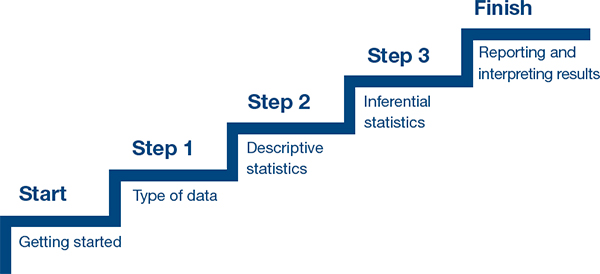 At the back of this book (page 149) there is a quick reference for the mathematical symbols used in this book: Symbols explained.
At the back of this book (page 149) there is a quick reference for the mathematical symbols used in this book: Symbols explained.
GETTING STARTED Part 1 is about what you need to think about before you begin to analyze your data. Start Getting started  What exactly are you being asked to do? starts here.
What exactly are you being asked to do? starts here.  focuses on defining your research question.
focuses on defining your research question.  give practical tips for designing questionnaires and entering data into a spreadsheet.
give practical tips for designing questionnaires and entering data into a spreadsheet. 
Next page

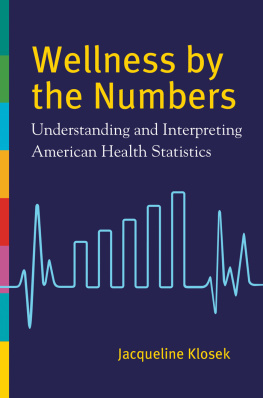
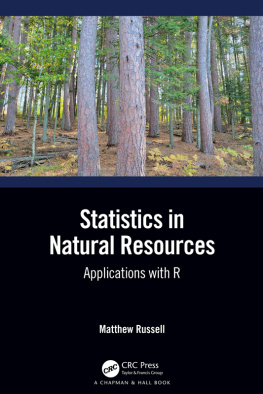
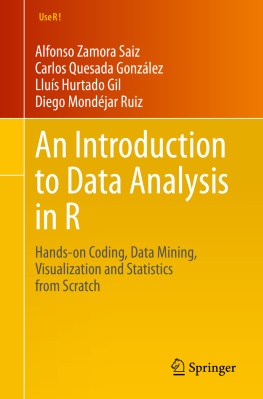

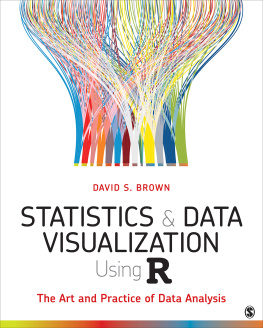
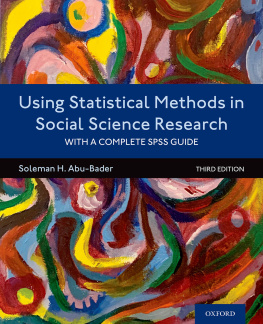

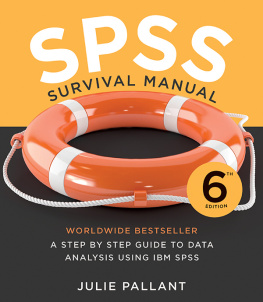

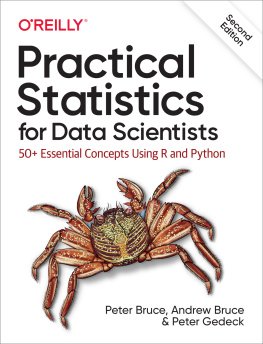
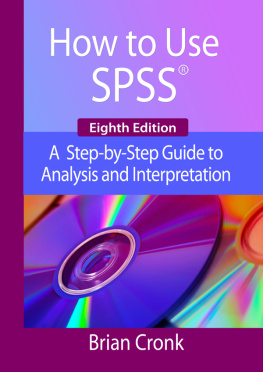
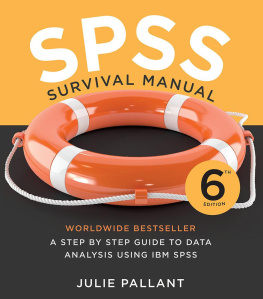
 Catrin Radcliffe, under exclusive licence to Springer Nature Limited 2020 All rights reserved. No reproduction, copy or transmission of this publication may be made without written permission. No portion of this publication may be reproduced, copied or transmitted save with written permission or in accordance with the provisions of the Copyright, Designs and Patents Act 1988, or under the terms of any licence permitting limited copying issued by the Copyright Licensing Agency, Saffron House, 610 Kirby Street, London EC1N 8TS. Any person who does any unauthorized act in relation to this publication may be liable to criminal prosecution and civil claims for damages.
Catrin Radcliffe, under exclusive licence to Springer Nature Limited 2020 All rights reserved. No reproduction, copy or transmission of this publication may be made without written permission. No portion of this publication may be reproduced, copied or transmitted save with written permission or in accordance with the provisions of the Copyright, Designs and Patents Act 1988, or under the terms of any licence permitting limited copying issued by the Copyright Licensing Agency, Saffron House, 610 Kirby Street, London EC1N 8TS. Any person who does any unauthorized act in relation to this publication may be liable to criminal prosecution and civil claims for damages. a simple calculation: reporting information, such as the average grade of the end-of-year exam
a simple calculation: reporting information, such as the average grade of the end-of-year exam  Who is this book for? You may have collected some data and you need to write the Methods and Results section of your report.
Who is this book for? You may have collected some data and you need to write the Methods and Results section of your report.  If this is you, then youve come to the right place. Read on! About this book How to Analyze Data is organized to guide you through the statistical process starting from the very first step. It does not detail every statistical measure or method youll find in a stats text book. Part 1 Getting started is about the first steps in data analysis: defining your research question, designing your questionnaire and entering your data into a spreadsheet. Part 2 Understanding and describing your data takes you through the first two steps of the statistical process: what statistical measures to report and how to calculate them for different types of data. Part 3 How do statistical tests work? unmasks how various statistical tests work and the assumptions made in analyzing data. Part 3 How do statistical tests work? unmasks how various statistical tests work and the assumptions made in analyzing data.
If this is you, then youve come to the right place. Read on! About this book How to Analyze Data is organized to guide you through the statistical process starting from the very first step. It does not detail every statistical measure or method youll find in a stats text book. Part 1 Getting started is about the first steps in data analysis: defining your research question, designing your questionnaire and entering your data into a spreadsheet. Part 2 Understanding and describing your data takes you through the first two steps of the statistical process: what statistical measures to report and how to calculate them for different types of data. Part 3 How do statistical tests work? unmasks how various statistical tests work and the assumptions made in analyzing data. Part 3 How do statistical tests work? unmasks how various statistical tests work and the assumptions made in analyzing data. At the back of this book (page 149) there is a quick reference for the mathematical symbols used in this book: Symbols explained.
At the back of this book (page 149) there is a quick reference for the mathematical symbols used in this book: Symbols explained.